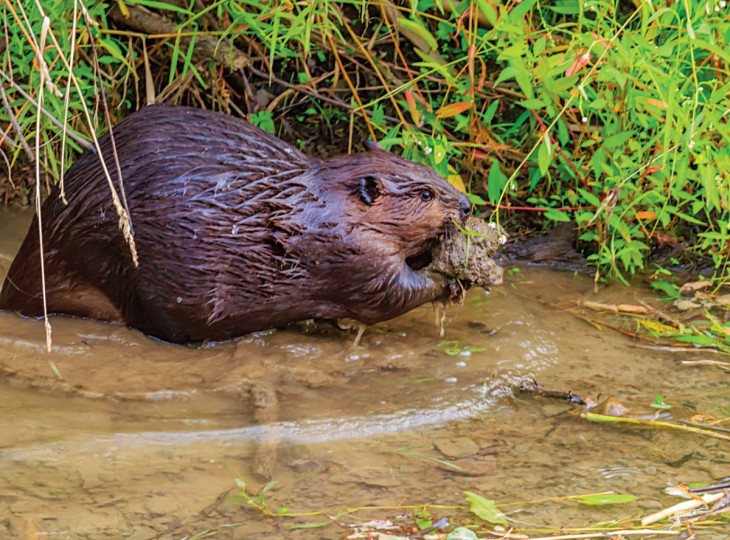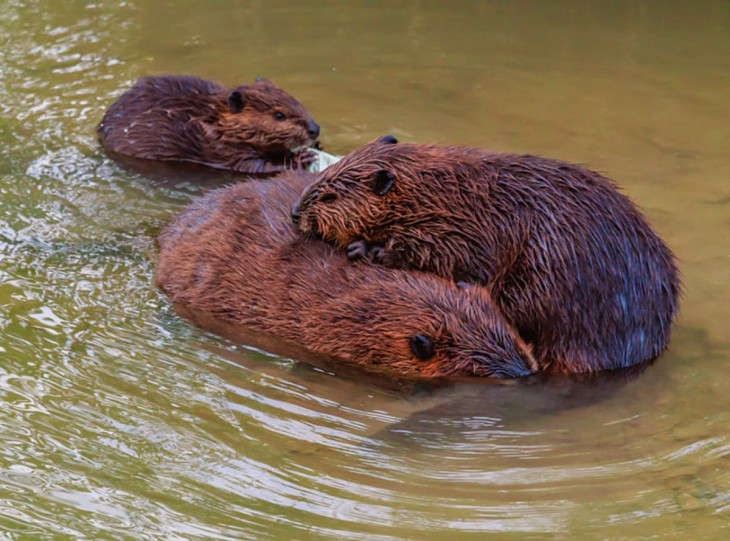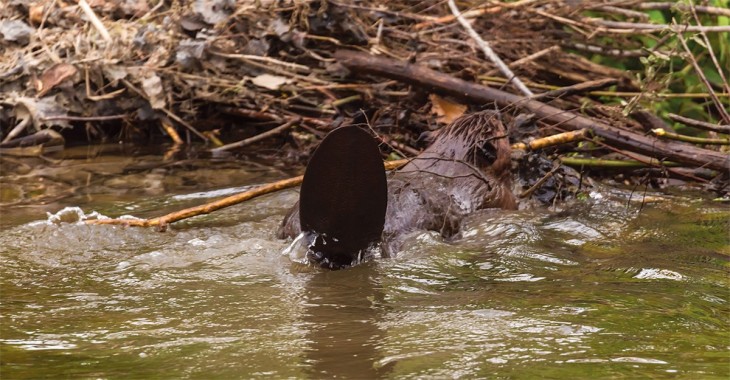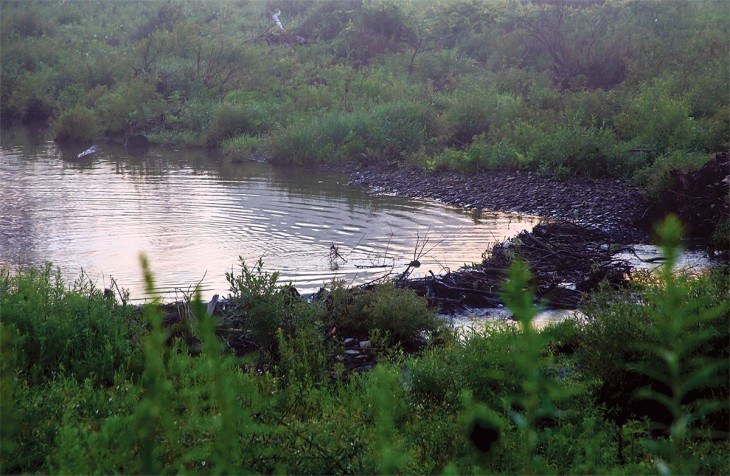Doolittle Creek is a small stream that meanders through the Fairfield Valley east of Candor, New York. The Doolittle Creek beavers, henceforth known as the beavers, had built a nice dam across the creek, turning a patch of abandoned pasture into a pond. The pond provided refuge for a large variety of birds and other animals.
Then last June, the area got hit with a torrential downpour.
Driving rains caused the inlets to overflow, and tons of debris washed into Doolittle Creek. The flood hit with such force that it completely wiped out the dam. The next day, what had been a beaver pond was a flowing stream littered with sticks, logs, and stones. The lodge looked intact – though high and dry – but there were no beavers to be found. Did they survive the onslaught?
I feared the worst, and so was glad to notice the start of a new dam shortly after the flood.
Every morning I would go down to check the progress being made on the dam, and I was always surprised to see how much work was done. At first I noticed just one beaver, but when I started going earlier in the mornings it was common to see two adults and a yearling working on the dam. To rebuild, they first propped poles against the banks that were pointed upstream. They weighed the poles down with heavy rocks, and used grass and dirt as mortar. I watched them dig clean dirt with their front, as well as rear, feet. Once the base was established, they jammed other sticks into the dam, aligning the wood with the direction of the stream flow. Still more sticks were inserted between the existing sticks and branches. As the water backed up, they’d dive down and scoop up mud from the pond bottom with their front feet. With the mud lodged between their front legs and neck, they’d swim to the dam. Time and time again the beavers did this until the dam was secure.

In about five weeks the dam was completely rebuilt and work began on a secondary pool, where the beavers had access to tasty willow twigs. To get into the second pond, the beavers had to come out of the water and go over the dam. When they were on land, I marveled at how big they were. Like icebergs in the water, on most occurrences you only see their heads and not the large masses underneath.
As spring progressed into summer, I began to see the young of the year, who were allowed to come out of the lodge and eat with the adults. Beavers typically live in family groups made up of monogamous parents, yearlings, and that spring’s young. As the pond complex grew, the beavers split the work up. An adult tended to work the dam nearest the road, while others would work on the main dam or in one of the smaller, secondary pools. In emergencies, they’d join forces to take care of any pressing leaks. They did almost all of their daylight work around dawn and dusk, though most was accomplished in the dark of night.
By September, the beaver family from Doolittle Creek had replaced the dam with a structure that was bigger and stronger than the original; they’d also created six new (smaller) ponds for feeding and socializing. As you can see from these pictures, the new ponds were inviting to both wildlife and nature photographers.









